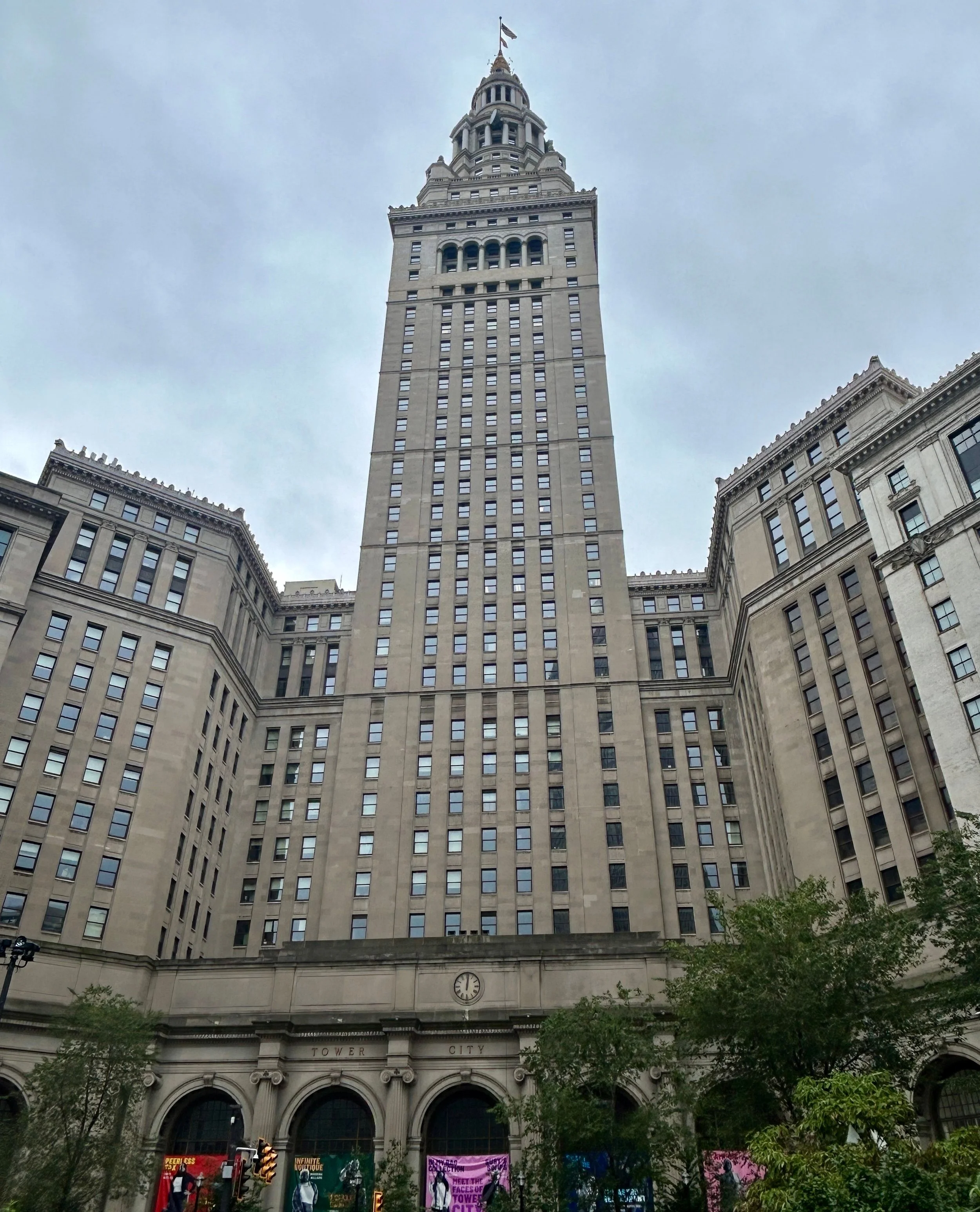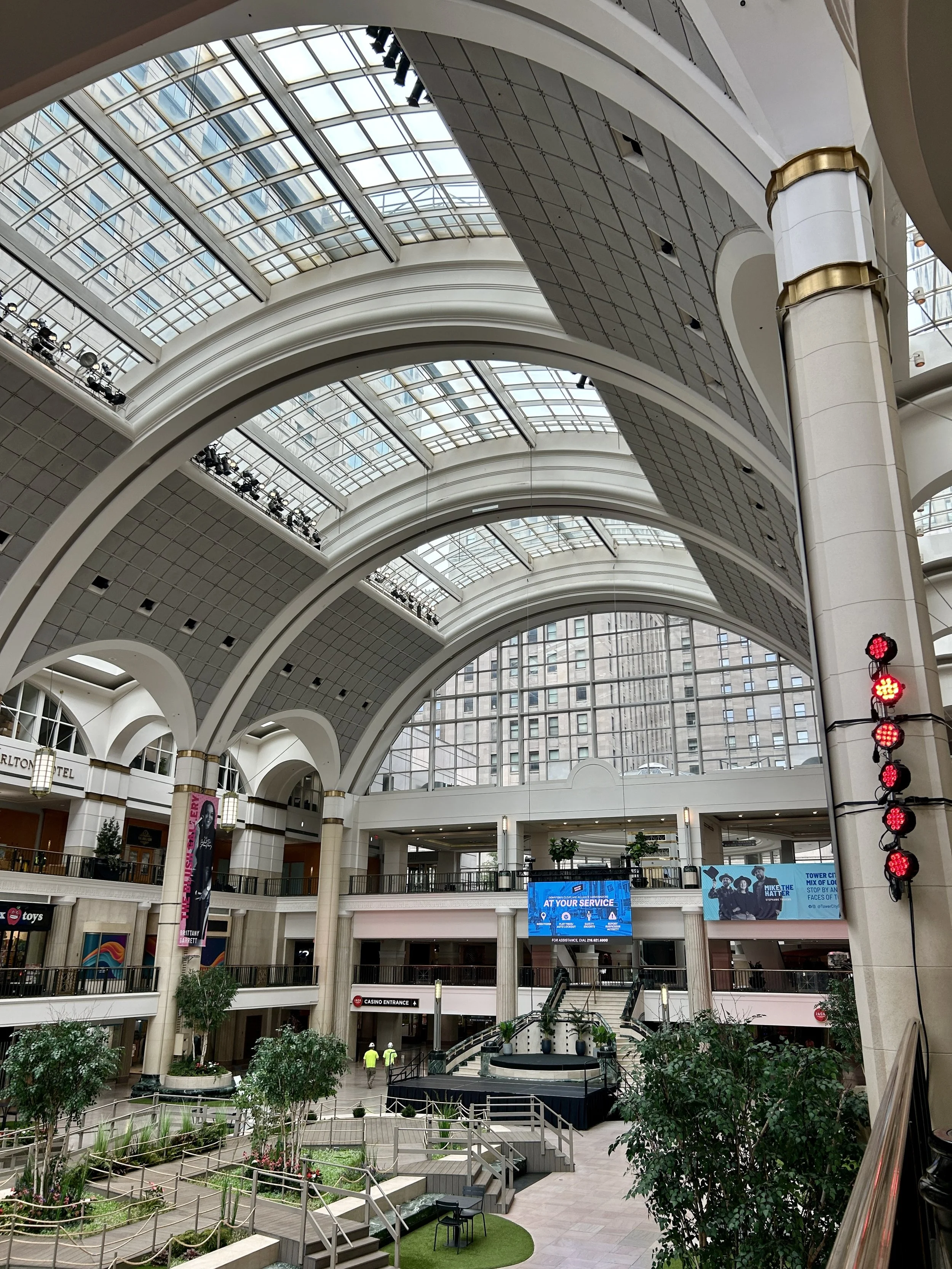Cleveland: Featuring Tower City, and Terminal Tower - Part II
Tower City, downtown Cleveland, Ohio
The original rail terminal and tracks were used by the New York Central, Nickel Plate Road, Big Four, and the Baltimore and Ohio (B&O) Railroads, inspiring the name Terminal Tower. It was part of the railroad boom after the Civil War and was in its heyday during World War II. It was also the main terminal for the Shaker Rapid Transit and the crosstown RTA rapid line through the years. The last passenger service pulled out of the terminal in 1977. Ohio was noted as having one of the most extensive interurban networks, with over 2,000 miles of track. The Cleveland Union Terminal ceased to exist when the tower was completed in 1927.
Tower City, circa 2022
The seven hundred and eight-foot tower was built by the brothers Sweringen, who had seized entire city blocks of more than one thousand buildings and rid them of the flophouses and rats. Oris and Mantis were real estate and railroad tycoons who planned the Shaker line to connect their planned suburb to downtown. Terminal Tower was modeled after The Beaux-Arts Municipal Building in New York and began housing tenants in 1928. It was the tallest building outside of New York in the world until 1953 when the main building for the Moscow University was built, and then the Prudential Building in Boston in 1964. The foundations were two hundred and fifty feet deep and the plans also included bridges and viaducts for the railroad approaches. A strobe light was attached to the top of the building and rotated three hundred and sixty degrees and guided ships into Cleveland’s port and planes into Cleveland Hopkins Airport
A gallery view of the inside where you can just picture a locomotive barreling into the station back in the early 1900s.
For the Sweringen’s new venture to succeed, there needed to be railways with shops and facilities at the downtown end to entice travelers to visit. Closed as a restaurant since 1967, he high-end English Oak Room is now only used for special events but was part of the Fred Harvey restaurant chain popular during the 1880s to the 1940s. Fred Harvey emigrated at fifteen from Liverpool England, and began providing decent fare for rail travelers when he had to take jobs on riverboats and at rail stations when his partner ran off with their money to join the Confederacy at the start of the war. Rail concessions were deplorable, plus there was not time enough for travelers to order and eat, leaving many stranded. When Harvey initiated his rail restaurant concept, all that changed for passengers everywhere.
The Hotel Cleveland, built in 1918 by the Sweringen brothers, was the original site of a hotel and tavern since 1812. It has been remodeled, revamped, and renovated numerous times and remains at the corner of Public Square and Superior Avenue today as a Renaissance hotel by Marriott.
Tower City was formerly the home of Higee’s, the downtown department store that had a rich Cleveland history.
Another iconic institution also anchored the rail terminal. Higbee Brothers department store, which was featured in the 1983 movie A Christmas Story, was built in 1932 after years of being housed on East Euclid Avenue. In the midst of the Depression, the grand store featured a canopied front, a block-long chandeliered main aisle, and the tenth-floor Silver Grille. Its catchphrase for many years was “If you haven’t seen Higbee’s today, you haven’t seen Higbees.”
Terminal Tower is now Tower City, with two hotels, shops, restaurants, and office and residential space. The observation deck is on the forty-second floor. On a clear day, the city and surrounding areas can be viewed for up to thirty miles. The tower is featured in the films The Fortune Cookie (1966), The Deer Hunter (1978), A Christmas Story (1983), and Major League (1989). Down in the plaza by the fountain, you can see artists, musicians, and actors entertaining passersby, locals and visitors alike.
The daily featured piano player with his soft stylings sang for Grant and for us on this Cleveland summer day.
Throughout our travels, we regularly fit in a visit to Moses Cleaveland’s development on the river. It’s worth the time, and might be a surprisingly singular visit. You won’t know until you try!




